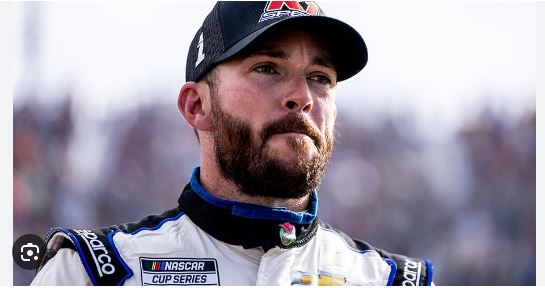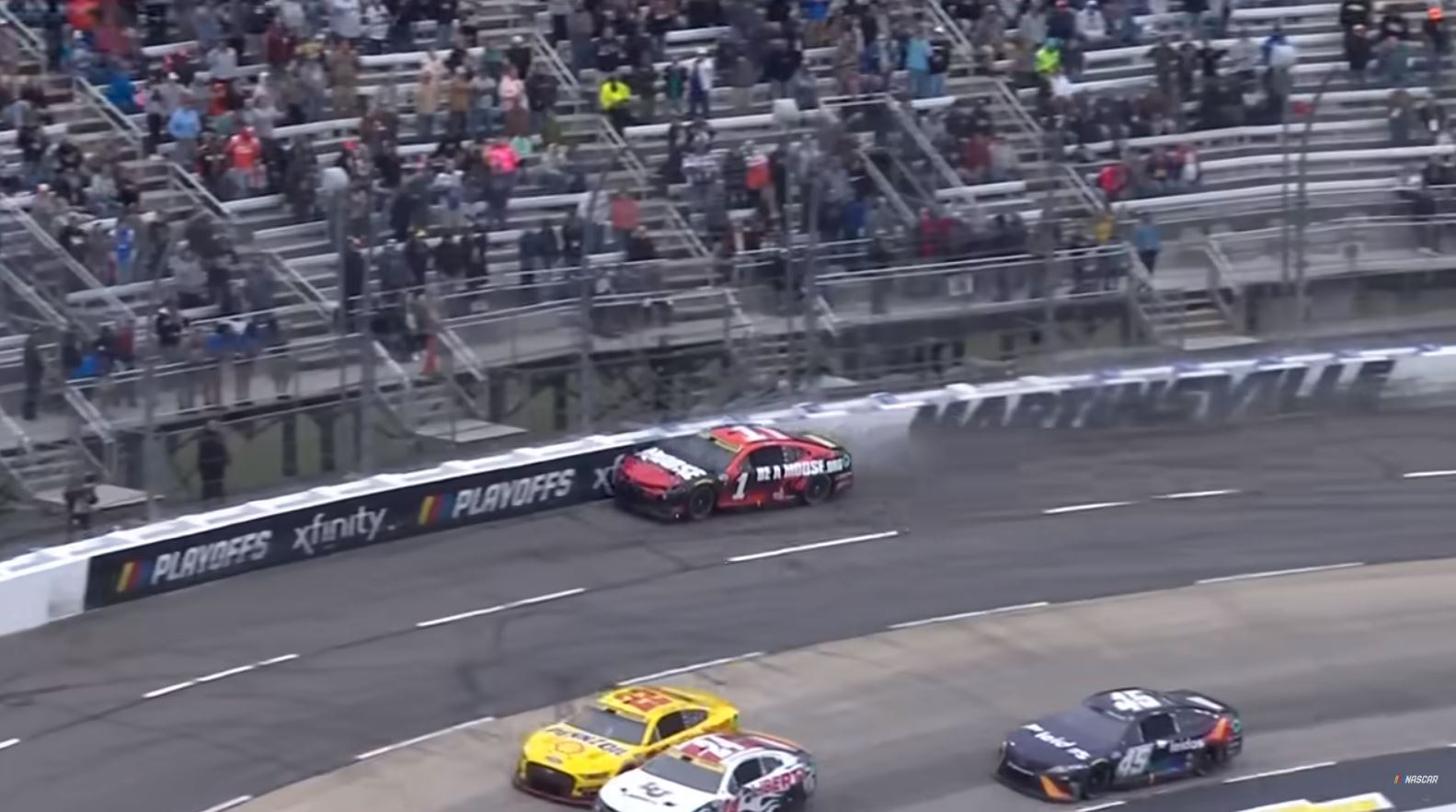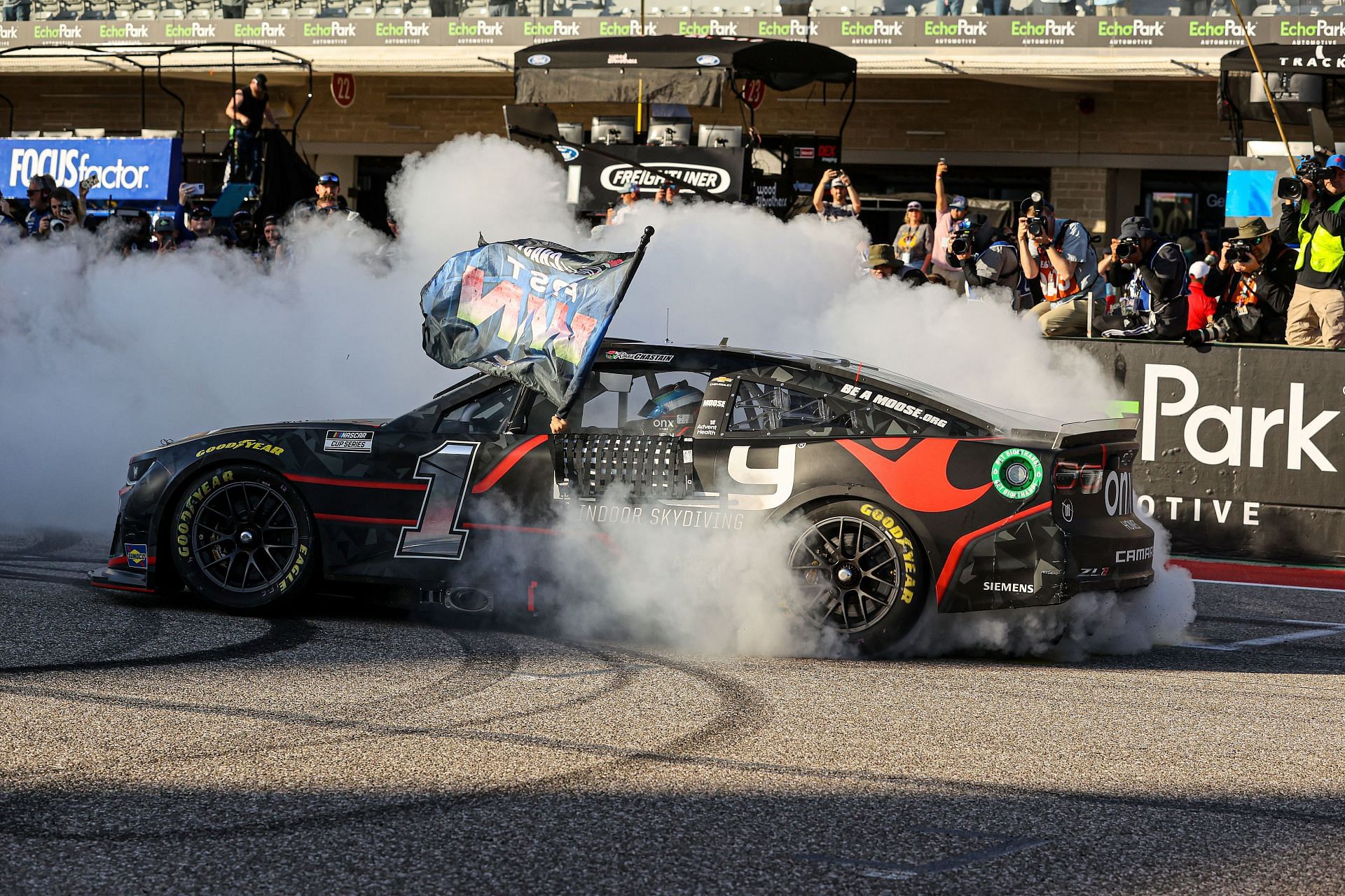
NASCAR has effectively prohibited the “Hail Melon” video-game technique that driver Ross Chastain utilized at Martinsville Speedway to race his way into the championship finale.
Last year, Chastain pressed the gas and purposefully smashed into the wall, hoping that the momentum would propel his car past his competitors. The move propelled him into NASCAR’s title-deciding final race in the final of four positions, and it was praised by motorsports professionals throughout the world.
However, his fellow NASCAR opponents believed Chastain’s tactic was hazardous and not in the spirit of fair competition. NASCAR said Tuesday that Chastain’s wall-hugging, jaw-dropping pass on the penultimate lap will result in a penalty in 2023.

“Not a new rule,” stated Elton Sawyer, NASCAR’s VP of Competition. “I believe we all remember the last-lap move at Martinsville in the fall. It generated a lot of excitement and increased awareness for our sport. However, it was not without controversy.
NASCAR referred to regulation 10.5.2.6.A, which reads “any violations deemed to compromise the safety of an event or otherwise pose a dangerous risk to the safety of competitors, officials, spectators or others are treated with the highest degree of seriousness.”
Sawyer stated that there was internal conversation about the need to “do something,” but NASCAR waited until after the season to collaborate, research statistics, and review the rulebook.
“This is not a new language,” he explained. “Basically, if we believe that an act is threatening the safety of our competitors, officials, or spectators, we will take it seriously. We will penalize that act in the future. Essentially, it would be a lap or time penalty at the finish of the race. That move at Martinsville would result in a penalty in 2023.
Chastain was on the point of elimination in the playoffs when he remembered a racing technique he used to do with his brother, Chad, on the GameCube as a kid. He slammed his automobile against the outer wall, let go of the steering wheel, and drove the accelerator to the floor.

It worked just like it did in the video game. On the final half-lap at the Martinsville short track, Chastain’s car appeared to be at hyper-speed while everyone else was poking along.
Going at least 50 mph quicker than everyone else, he passed five vehicles in a matter of seconds to take the final slot in the title race.
He finished second to Joey Logano in the championship race in Phoenix.
Other notable changes to NASCAR’s Cup Series in 2023:
– Losing a wheel no longer results in a four-race penalty for the crew chief and two crew members. If the incident occurs outside of pit road, two crew members will be suspended for two races.
– There will be no more stage breaks on road courses. NASCAR will still give points at the finish of each stage, but without the false caution.
– If a collision causes damage to a team’s car, NASCAR will give them seven minutes on pit road to repair it. It was six minutes last year before being raised to ten minutes during the Cup playoffs.
– Restart zones will be expanded by 50%, with 25% additional space before the start/finish line and 25% more at the conclusion. The regulation modification is effective for the first five tournaments of the season and will be reviewed thereafter.
– NASCAR eliminated the top-30-in-points requirement for drivers attempting to reach the playoffs. Drivers will still be expected to participate in all events unless granted a waiver (usually for an injury).
– Mufflers will be used in the season-opening Clash, an exhibition race held at the Los Angeles Coliseum for the fourth consecutive year. Mufflers will reduce engine noise and provide an environment conducive to fan chats.
– NASCAR amended its rulebook to require fire-retardant undergarments from the neck to the wrists to the ankles. It had already been recommended.
– NASCAR will install new recording devices in cars to gather more comprehensive crash data. It is a substantial improvement over the black box technology that was first utilized in 2002 following Dale Earnhardt’s tragedy at Daytona International Speedway.
– NASCAR will have a “significant increase” in the amount of drivers who will wear mouthpiece sensors during races. They were not offered at all events in 2022, but will start in 2023. Data recorders measure what cars go through; this would provide information directly from drivers about what they go through during races, particularly wrecks.
– NASCAR has officially chosen eight sites where wet-weather packages (rain tires) will be available in 2023: the Los Angeles Coliseum (the Clash), Lucas Oil Raceway in Indianapolis, Martinsville, Milwaukee, New Hampshire, North Wilkesboro (All-Star race), Phoenix, and Richmond. NASCAR will use “rain” tires, and teams must have windshield wiper hookups and rear lights if they want to compete in rainy conditions at the Clash, Martinsville, New Hampshire, North Wilkesboro, Phoenix, and Richmond.
Leave a Reply